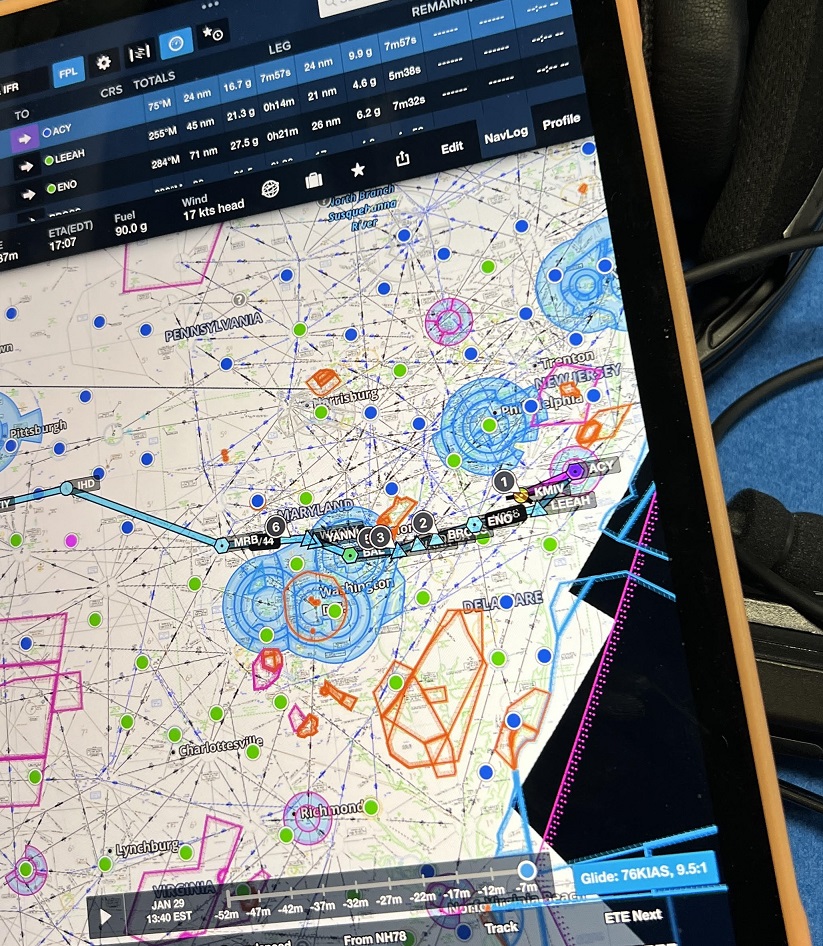
I overheard some older pilots bemoaning the use of ForeFlight and Garmin Pilot by students, “they should be learning with paper like I did.” My imagination began to wander down the flight-plans of aviation past and wondered if the original aviators had the same attitudes when navigational charts were being developed, “They should learn to fly from bonfire to bonfire like I did!” As technology continues to revolutionize the aviation industry, student pilots find themselves at the forefront of this transformation. One significant advancement that has gained popularity in recent years is the Electronic Flight Bag (EFB). In this blog, we will explore the benefits of incorporating EFBs into pilot training and offer insights into how student pilots can effectively leverage this cutting-edge tool.
Understanding Electronic Flight Bags: An Electronic Flight Bag is a digital solution that replaces traditional paper-based charts, manuals, and documents with electronic versions accessible on a tablet or other portable devices. This innovative technology not only streamlines cockpit operations but also enhances situational awareness, making it an invaluable asset for pilots at all levels.
Benefits of Using EFBs for Student Pilots:
- Reduced Paperwork: One of the most evident advantages of EFBs is the elimination of bulky paper charts and manuals. Student pilots can access all necessary documents with a few taps, reducing cockpit clutter and making it easier to organize essential information.
- Real-Time Updates: EFBs provide real-time updates to charts, weather information, and airport data. This ensures that student pilots have the latest information at their fingertips, promoting safer and more informed decision-making during flight.
- Enhanced Navigation: Electronic Flight Bags come equipped with powerful navigation tools, including interactive maps, route planning features, and geo-referenced charts. This allows student pilots to visualize their flight paths more effectively and follow routes with greater precision.
- Weight and Fuel Savings: The transition to electronic charts and documents significantly reduces the weight of materials carried onboard, leading to fuel savings. For student pilots, this means increased efficiency and a more eco-friendly approach to flying.
- Customization Options: EFBs often allow users to customize their display preferences, tailoring the interface to their specific needs. This flexibility ensures that student pilots can optimize their workflow and focus on critical information during different phases of flight.
Tips for Student Pilots Using EFBs:
- Thorough Training: Before incorporating EFBs into regular flight operations, student pilots should undergo thorough training on the specific device they will be using. Familiarity with the software and its features is crucial for efficient and safe use.
- Backup Procedures: While EFBs are reliable, it’s essential for student pilots to have backup procedures in place. This may include carrying physical charts as a contingency measure in case of technical issues.
- Regular Updates: Stay proactive in keeping the EFB software up to date. Regular updates ensure access to the latest features, improvements, and critical information that may impact flight planning and execution.
- Battery Management: Ensure that the device’s battery is adequately charged before each flight. It’s also advisable to carry a portable charger or an additional device as a backup power source.
Embracing Electronic Flight Bags are a game-changer for student pilots, offering a seamless transition into the technologically advanced landscape of modern aviation. By harnessing the power of EFBs, student pilots can enhance their skills, improve situational awareness, and contribute to a more efficient and sustainable future for the aviation industry. As technology continues to evolve, the integration of electronic tools like EFBs will undoubtedly play a vital role in shaping the future of flight training and operations. But our responsibility as aviators remains unchanged in that we are to become and maintain proficiency with all of the tools we have available to us, and never before has our toolbox been so full.
